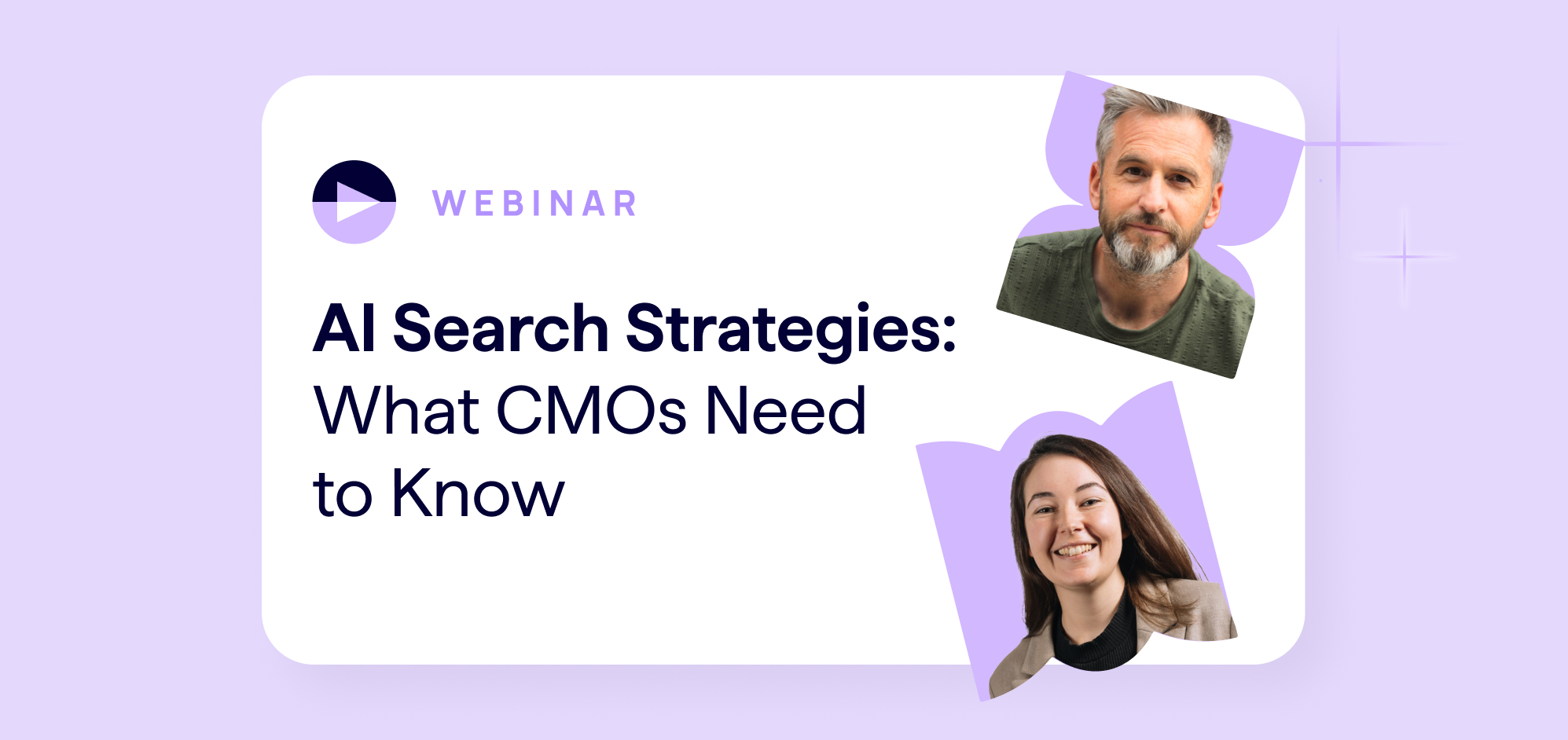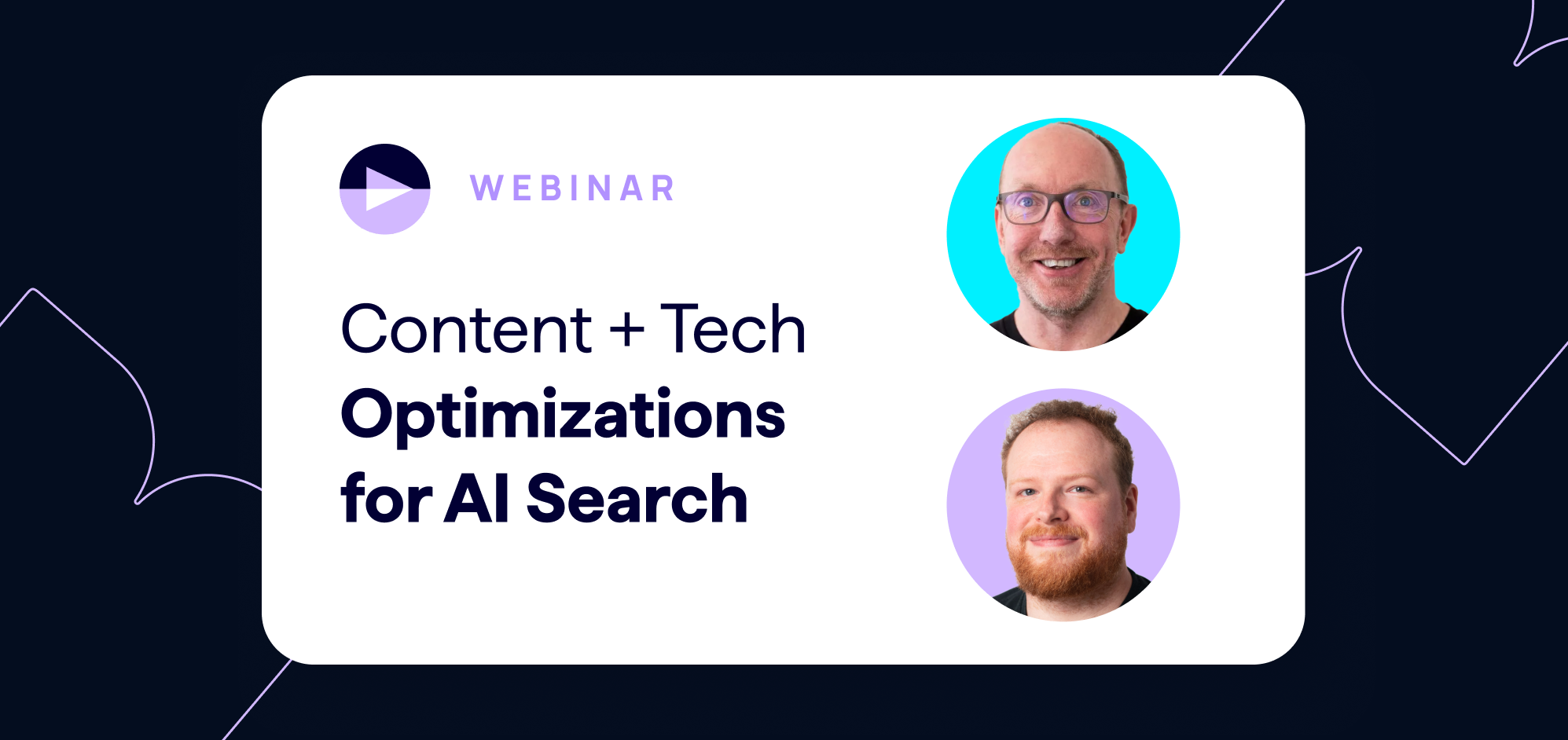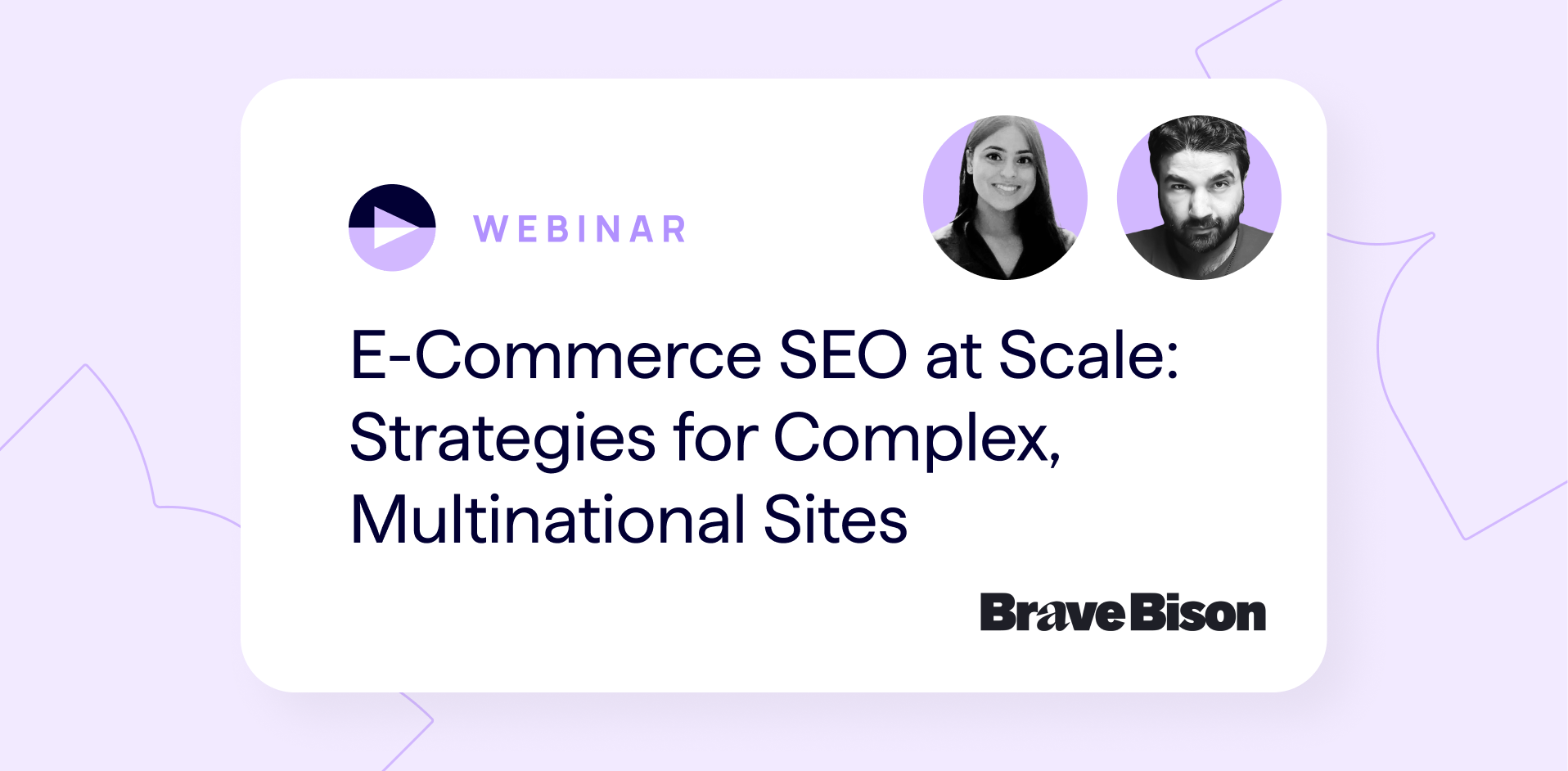For website managers, product managers, developers, UX designers, digital marketers, and business leadership, creating an accessible website is not only the right thing to do from an ethical standpoint, but also an opportunity to reach new audiences, improve customer experience, drive loyalty, and ensure business compliance with local accessibility and inclusivity regulations. This webinar will help you get started.
With Skyscanner software engineer and accessibility advocate, Gryff Coates, and Clyde Valentine, head of growth at digital accessibility firm QualityLogic, our latest Lumar webinar dives into how digital teams can get started with website accessibility — and why it’s a hugely important consideration for businesses today.
We cover:
- Why brands should care about website accessibility in 2023: ethical, legal, promotional, financial, and growth considerations
- Where to start in making your website or digital products more accessible and inclusive for all users
- How to create ongoing processes across your business to improve and maintain digital accessibility standards well into the future.
Watch the full webinar (including the question and answer session!) in the video above, or read on for our key takeaways.
[Note: closed captioning for the video will be available on May 17, 2023.]
What is digital accessibility?
Coates paraphrases the UN charter for his definition of accessibility:
“[Accessibility] enables people to live independently and participate fully in all aspects of life, ensuring that people have equal access to the physical environment, information, and communications.”
When considering website accessibility with an eye toward improving the digital experience, it’s worth considering that there are different types of accessibility needs. These needs can broadly be considered in three categories:
- Permanent disabilities: This can include being medically disabled, having a permanent medical condition, and/or being disabled by society.
- Temporary disabilities: A disability that is not a lifetime condition.
- Situational impairment: Consider the context where the user is. Are they in a low light or a bright sunny situation? Are they a parent holding a child with one arm? Is the individual in a country where they can’t use their first language?
He explains the concept of being disabled by society further:
“When you think about being ‘disabled by society’, what that basically means is that, say you’re a visually impaired user and you can’t get access to a website [not because you don’t have the capability or tools like a screen-reader, but because the website owners have not built in non-visual accessibility methods] — it’s the website disabling you, not yourself.”
Coates reminds us that there isn’t a ‘true’ or ‘false’ binary in website accessibility. It’s a wide-ranging concept with considerations for all people, whether or not the challenges they run into with accessing digital content is a permanent, temporary, or situational hurdle.
“When we think about accessibility, it’s just not about whether someone is disabled or not, it’s about how we can allow everyone access to digital content.”
Why website accessibility matters for businesses today
“When we think about accessibility, generally, most organizations will think about it from a legislation point of view. They want to be compliant with the Americans With Disabilities Act (ADA), or the European Accessibility Act (EAA). But there’s another nuance that people miss, and that’s the product side of things. We want to make sure that you have a digital site that is accessible to all,” says Coates.
“The UN says around one in five people have a disability of some kind. And each one of those will likely need accessible content to be able to navigate a site. So, that means that you could be missing out on about one in five of your customers. And if you’re not able to serve their needs as a product, they’ll just go elsewhere where those needs can be served. Your margins can actually be very heavily affected by that.”
It’s the right thing to do
For Coates, brands need to be thinking about accessibility for a number of reasons. The first, of course, is that it is our moral duty to do so.
“It’s just the right thing to do in society. We want to make sure society is an equal place and an equal playing field. And as part of diversity, inclusion, and equity, we can to make sure that we include as many people as we can.”
Legal ramifications for non-accessible websites
Secondly, it is – in many places, and for many types of organizations, at least – the law. The UK has the Equality Act. The US has the Americans With Disability Act (ADA). And organizations within the EU will be subject to the recently introduced European Accessibility Act. With these regulations, many companies and agencies have a requirement to be accessible — and can potentially incur fines if their websites or products don’t meet minimum standards for accessibility. For digital content and websites, most of these regional regulations expect businesses and organizations to meet WCAG 2.1 guidelines.
Brand reputation benefits
Coates also points to the promotional and brand reputation benefits of creating more accessible digital experiences.
“I know a blind user who swears by Easyjet because it’s so good for screen readers. And they propagate [that enthusiasm and recommendation] out to everyone else.”
When many brands still struggle with accessibility, those that succeed in providing better, more accessible online experiences are likely to earn customer loyalty — and earn word-of-mouth promotion to other prospective customers who want to know where to turn to if they have accessibility needs that often aren’t being met by other brands.
Financial incentives: reaching and retaining more customers
Finally, there are fairly straightforward financial opportunities for those investing in accessibility. Coates cites a UN study that says around one in five people have some kind of disability — and tells us that about half of those people will have a specific accessibility need when it comes to digital content.
“If you’re not accessible, there’s a whole market that you’re completely missing out on. That’s quite a big margin that you can add there. It can make a difference between you and your competitor in terms of how you make your gains. And just by making some simple changes to a website, for example, you can actually make it far more accessible and retain more customers.”
This means accessibility can open your brand up to more first-time buyers. But it also means more frequent purchasers and more loyal customers. The best way to give users with accessibility needs an equal experience, Coates concludes, is to simply: give them the product they want.
![Slide from the webinar presentation that reads: Why should [accessibility] matter to me? - Moral: it’s the right thing to do. - Legal: it’s the law. - Promotional: There are marketing benefits. - Financial: There are major finance gains.](https://www.lumar.io/wp-content/uploads/2023/05/webinar-slide-why-website-accessibility-matters-for-business-1024x573.png)
Where to start with website accessibility
For QualityLogic’s Clyde Valentine, getting started with digital accessibility is of course a hugely important first step, but much of the work he does with businesses looks at how they can make accessibility a sustainable, ongoing practice.
“Accessibility isn’t about being perfect, it’s about making progress.”
Clyde Valentine, Head of Growth at accessibility firm QualityLogic
Shout Out: Clyde picked up the “Progress Over Perfection” concept from the fantastic Meryl Evans.
So, how do businesses hit the ground running?
- Just get started: It might seem simple but Valentine urges businesses to not overthink accessibility at the expense of action. His advice for brands is to implement a little bit to just get started and start to build your knowledge and skills over time to keep the progress going.
- Talk with real users with physical or cognitive impairments: These can be people inside or outside of your organization. They can be your actual users and customers, or people in your wider community. Valentine notes that people’s experiences are different. Listening to them and understanding their experiences through a real human connection is a major step toward familiarity, empathy, and understanding.
- Run a website accessibility scan: Automated website accessibility auditing tools can help expose common issues or flag aspects of your site that don’t adhere to WCAG guidelines, giving you an initial list of tasks to address in your accessibility improvements.
- Work with an auditing partner: Accessibility auditing partners can engage real users on your behalf and help you get a deeper level of understanding. They are a good foundation to build from if you’re just getting started, or if you want to periodically revisit your website or product’s accessibility progress.
- Fix accessibility issues found: Valentine advises brands to go through the process of trying to remediate the accessibility issues discovered in their site audits. Lessons learned through the journey of remediation are invaluable.
- Lean on the community: The accessibility community is open and welcoming and can help businesses with making their websites and products more accessible. WebAIM and W3C are also excellent resources. You are not in this alone!
How to build ongoing digital accessibility processes for your business
Once businesses have made a start on accessibility, the next step is ensuring the progress that has been made is sustainable and can be carried into the future. We know that the digital landscape is always evolving. Likewise, the needs of users and the methods to address those needs are always evolving too.
Valentine has a number of tips for aligning your organization with accessibility for the long term:
- Set clear accessibility goals: “It’s hard to know how you’re doing if you don’t have a target to shoot for,” he says. The Web Content Accessibility Guidelines are a useful resource for getting clarity on what you’re trying to achieve.
- Assign formal responsibility for accessibility projects: Valentine notes that without an internal leader to lead your company’s accessibility initiatives, there’s no accountability. He suggests assigning a Chief Accessibility Officer or ensuring other diversity and inclusion leaders within the organization are responsible for managing accessibility projects.
- Align your software development lifecycle (SDLC): Businesses should incorporate accessibility best practices into every step of their software/content development lifecycle, according to Valentine. Have designs checked for color contrast and other accessibility issues. Have QA teams perform accessibility testing on staging environments. It is much better to catch issues early rather than retrofitting.
- Equip your team: Your staff needs to be trained and that training needs to be maintained and updated as accessibility best practices evolve. Job aids and checklists are also useful for keeping teams aligned on accessibility goals.
- Measure your progress: Just as online brands measure their sales performance, it is also important to monitor and track your progress in improving digital accessibility. Valentine urges businesses to ensure there are clear pathways for users to provide feedback on accessibility.
- Focus on consistent, ongoing progress: Accessibility is not a one-time fix. It is a long-term project akin to web development, content campaigns, or SEO.
- Plan to keep learning and stay current: Technology is evolving, standards change, and we understand more about the needs of our users as time passes. Valentine advises that brands plan for how to keep the business informed on accessibility issues and solutions well into the future by following industry professionals and attending annual conferences.
Digital access for all
Globally, more and more people are relying on digital platforms. As brands work to improve customer experience, it makes sense for accessibility considerations to be part of that. And beyond simply being the right thing to do, improving accessibility on your website or digital product can offer significant business benefits, from remaining compliant with local laws and driving customer loyalty, to reaching more prospective customers and driving new sales.
If your brand is not yet thinking about accessibility, it is time to get started. As Valentine points out, it is more important to make progress, rather than planning for perfection. Learn from doing it. Monitor your activities. And tweak things as you go along. Your customers will thank you for it.
Connect with the webinar speakers
- Gryff Coates, software engineer and accessibility advocate at travel site Skyscanner
- Clyde Valentine, head of growth at digital accessibility consulting firm QualityLogic
- Andrew Levey, head of product marketing at Lumar 👋





